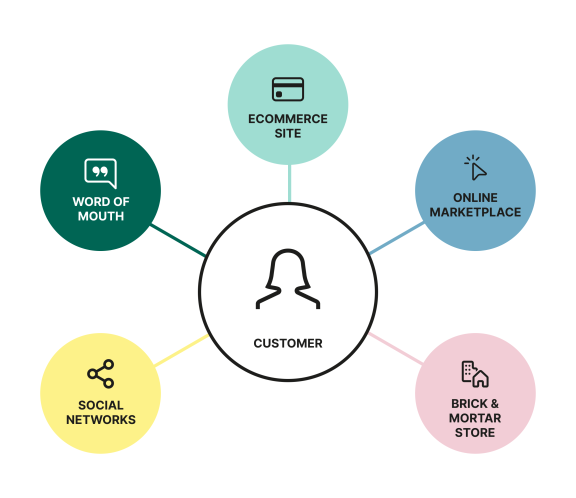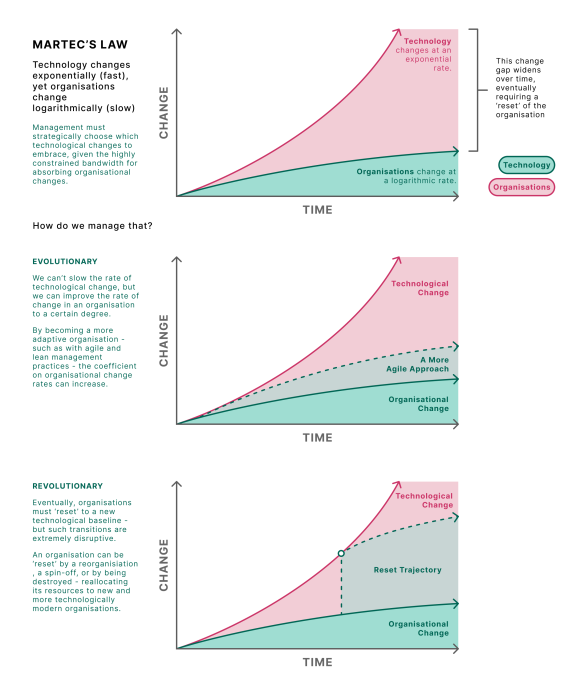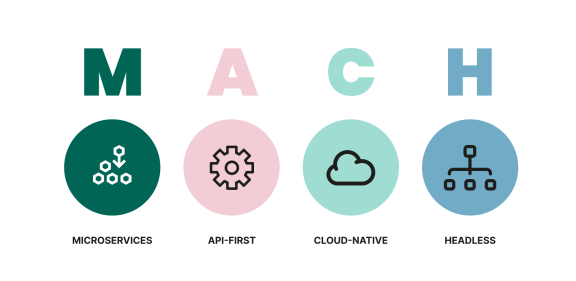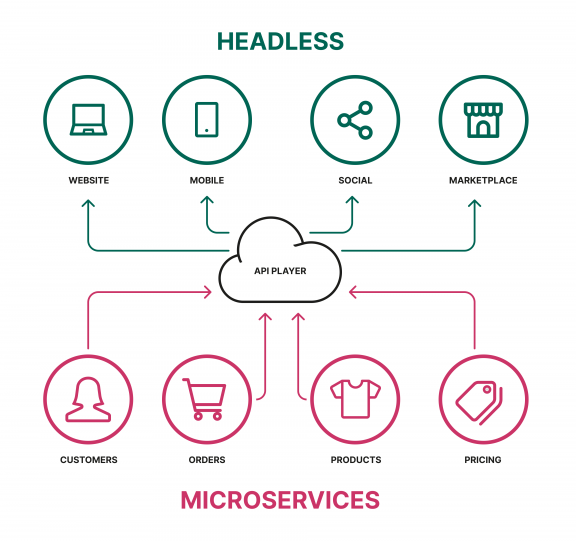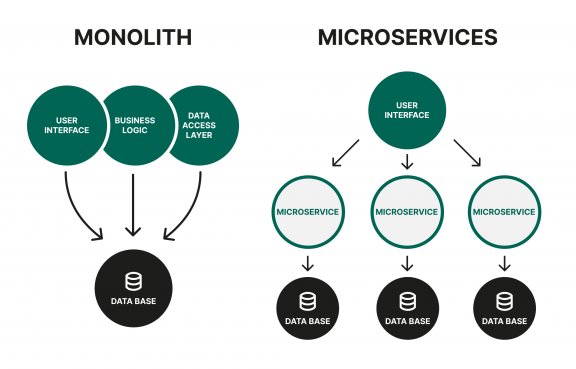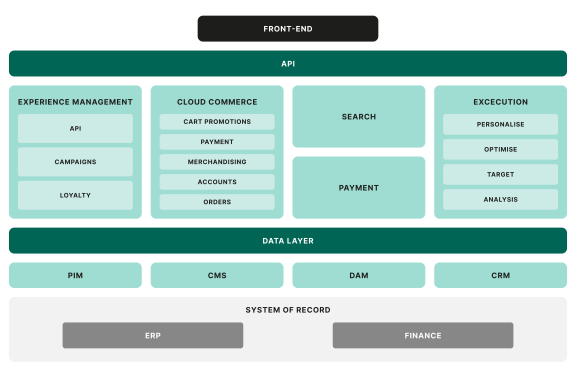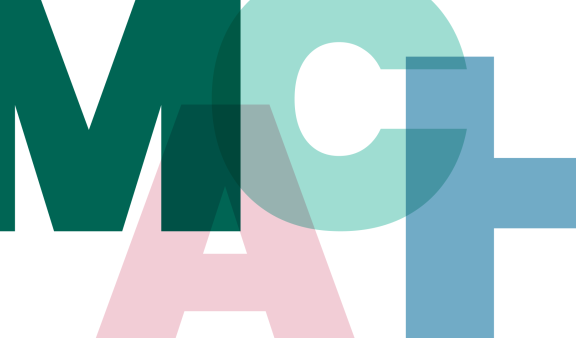
MACH Architecture: a new standard for digital excellence
This is the first in a series of articles on MACH architecture. In this post, we explain what MACH is and why MACH architecture is fast becoming a necessity for companies, and discuss the benefits and challenges of deploying this type of architecture.
Changing customer needs and market conditions are driving a demand for innovative and flexible tech solutions. Typically, today’s shopper wants to have the best online user experience allowing them to purchase products quickly and and with minimum fuss. Therefore, an agile approach is essential - both in terms of sales and technology.
Martec's Law
Martec’s Law describes the relationship between the progress of technological change and the ability of companies to adapt. Many companies are struggling to keep up with the pace of change, which can be detrimental to the business. The ability to adapt, transform and grow is essential to sustain the business in the future.
Traditional monolithic system architectures, also known as “all-in-one” solutions, generally do not offer the necessary innovative power nor the customer focus to serve the market immediately. To ensure that companies can innovate quickly and respond with agility to customer needs, they must have a modular architecture that can be extended at any given time.
This is the only way in which they can quickly deploy new functions and maintain control over their business and marketing processes. This approach is supported by MACH technologies. Each component is linkable and scalable, as well as interchangeable, and can be continuously improved and developed in order to meet changing business needs.
What is MACH?
MACH stands for Microservices, API-first, Cloud-native and Headless. MACH architecture is an amalgamation of technology principles that follows a best-of-breed strategy. This means that MACH is the best software solution for individual customer needs, without being restrictive.
M - Microservices
MACH architecture works like a modular system because of its self-contained microservices. Microservices are individual software components for executing specific business functions (e.g. search, CMS or check-out) that can be developed independently and also freely combined depending on current needs. In addition, the different business functions can be logically separated from one another so that they can be developed individually by dedicated teams.
A - API First
APIs connect different applications, systems, or services, guaranteeing fast and secure data transfer and therefore enabling the rapid integration of functionalities. In other words, APIs enable applications to talk and interact with each other. The advantage of these interfaces lies in the flexibility for system extensions and with that, the creation of a cross-channel digital experience. API-first development focuses on APIs instead of pre-built software solutions. API-first development ensures that ALL functions within the platform are accessible via the APIs.
C - Cloud-Native
With MACH architecture, the platform is not only stored in the cloud, but actually implemented directly within it, including the tools and services. This eliminates the need for a local server; the platform is in this way almost completely protected against failures and can easily be scaled as required.
H - Headless
A headless commerce platform is an e-Commerce solution in which the front-end (head) has been decoupled from the back-end commerce functions via APIs. Such an IT architecture enables microservices to be flexibly integrated via APIs, thereby quickly opening up new revenue opportunities. Since front-ends are decoupled from the business logic, new channels such as marketplaces or social media shopping can be implemented very easily.
How is MACH different from traditional monolithic software architecture?
Typically, e-Commerce software is developed as a single, integrated application. It is inherently rigid and built according to a fixed set of rules, from creating a new product discount to changing the font size on the front end. Given the challenges mentioned above, this concept is outdated.
By default, the traditional software architecture represents the monolithic software development approach. The monolithic model implies the development of a single-tier solution whose components share the same platform and form a consolidated software system.
Not only the enterprise, but also the technical architecture must necessarily become flexible.
Challenges of MACH
Moving from a monolithic to a MACH architecture, however, does not come only with advantages - it also involves some challenges:
Business Challenges
- Initial higher investment and management costs
- Initial development costs are higher mainly because in most cases a monolith has to be transformed into a MACH architecture
- Central store- and content management is not a given
- Increased stakeholder management
- Increased training effort due to multiple systems
- WYSIWYG and preview functionality might be limited with an “out-of-the-box” CMS
Technical Challenges
- Managing multiple solution providers and suppliers
- Increased complexity of the overall architecture
- Increased effort for maintenance and testing (end-to-end testing)
- Performance needs to be balanced
- Monitoring of the overall architecture is extensive
- Shift of development effort from back-end to front-end and potentially increased effort for API development
- Orchestration of all data from different systems
Conclusion
It is essential for companies to adapt immediately to customer needs and market conditions. One approach to this is MACH architecture. This is an amalgamation of technology principles and is considered the most effective software solution for individual customer needs to date.
MACH architecture offers many advantages, but also presents companies with certain challenges. For this reason, it is important that the changeover to a MACH architecture is planned and undertaken by experts.
Want to learn more? We’re offering a half day, free consultation to see if a MACH architecture is right for your business.
